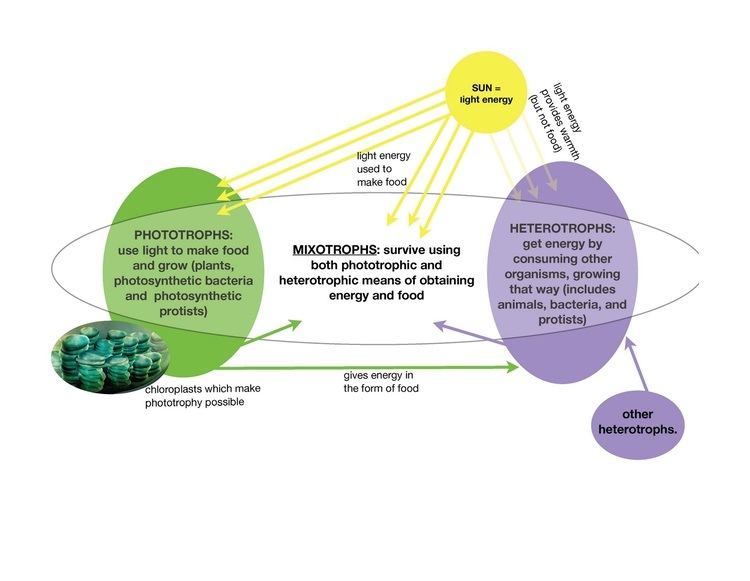 | ||
Representative species Venus flytrap, Drimia maritima, Paracoccus denitrificans | ||
A mixotroph is an organism that can use a mix of different sources of energy and carbon, instead of having a single trophic mode on the continuum from complete autotrophy at one end to heterotrophy at the other.
Contents
Possible combinations are photo- and chemotrophy, litho- and organotrophy, auto- and heterotrophy or other combinations of these. Mixotrophs can be either eukaryotic or prokaryotic. They can take advantage of different environmental conditions.
If a trophic mode is obligate, then it is always necessary for sustaining growth and maintenance; if facultative, it can be used as a supplemental source. Some organisms have incomplete Calvin cycles, so they are incapable of fixing carbon dioxide and must use organic carbon sources.
Mixotroph meaning
Types of mixotrophy
Organisms may employ mixotrophy obligately or facultatively.
In order to characterize the sub-domains within mixotrophy, several very similar categorization schemes have been suggested.
Consider the example of a marine protist with heterotrophic and photosynthetic capabilities: In the breakdown put forward by Jones, there are four mixotrophic groups based on relative roles of phagotrophy and phototrophy.
An alternative scheme by Stoeker also takes into account the role of nutrients and growth factors, and includes mixotrophs that have a photosynthetic symbiont or who retain chloroplasts from their prey. This scheme characterizes mixotrophs by their efficiency.
Examples
Organoheterotrophy can occur under aerobic or under anaerobic conditions; lithoautotrophy takes place aerobically.
Plants
Amongst plants, mixotrophy classically applies to carnivorous, hemi-parasitic and partially hetero-mycotrophic species. However, this could be extended to a higher number of clades as research proves that organic forms of nitrogen and phosphorus such as DNA, proteins, amino-acids or carbohydrates also are part of a number of plants' nutrient supplies.
